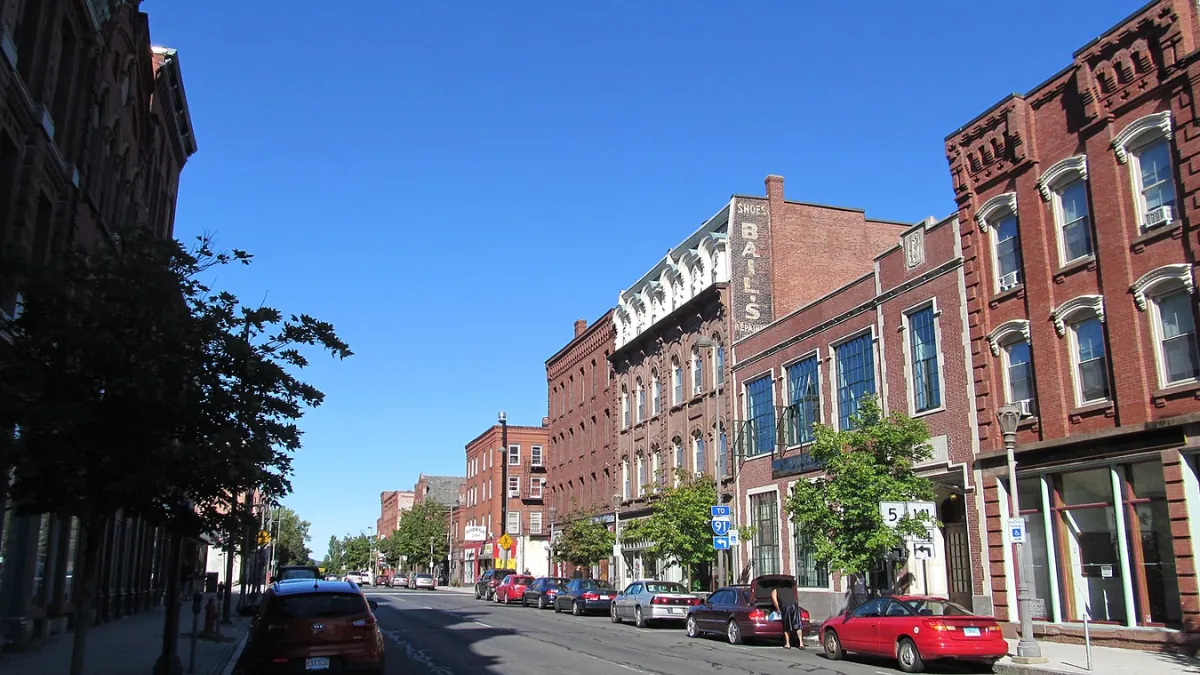Massachusetts, a state renowned for its rich history, vibrant culture, and esteemed educational institutions, also harbors cities that face challenges that impact their overall livability. While many communities offer a thriving environment for residents, others struggle with issues that hinder their appeal. This article delves into the factors that have led to the identification of Holyoke, Massachusetts, as the state’s least desirable city to live in.
Holyoke, Massachusetts, has been identified as the least desirable city to live in based on various factors that negatively impact its overall livability. These factors include:
Factors Contributing to Holyoke’s Low Ranking
| Factor | Description |
| Economic Hardship | High unemployment rates, stagnant job market, lack of diverse employment opportunities |
| Crime and Safety | High crime rate, particularly property crimes, atmosphere of fear and insecurity |
| Environmental Concerns | Poor air quality due to industrial activities and vehicle emissions, contaminated Connecticut River posing health risks |
| Infrastructure Deficiencies | Neglected roads, outdated schools, underfunded public services |
| Limited Growth Prospects | Lack of economic opportunities and diverse industries, sense of stagnation and limited upward mobility |
Economic Challenges
Holyoke’s economy has struggled for decades, with high unemployment rates that have consistently been above the state and national averages. In recent years, the unemployment rate has hovered around 10%, significantly higher than the Massachusetts average of 3.7%. This high unemployment rate is due to a number of factors, including the decline of the manufacturing industry, a lack of job growth in other sectors, and a skills gap among the workforce.
The lack of job opportunities has led to widespread poverty in Holyoke. According to the U.S. Census Bureau, 22.3% of Holyoke residents live below the poverty line, compared to 11.7% of Massachusetts residents and 11.6% of U.S. residents. This poverty rate has a number of negative consequences for Holyoke residents, including food insecurity, homelessness, and poor health outcomes.
Crime and Safety Concerns
Holyoke has a high crime rate, particularly in terms of property crimes. According to the FBI’s Uniform Crime Reporting Program, Holyoke’s property crime rate is 36.7% higher than the state average and 21.4% higher than the national average. The city’s violent crime rate is also higher than the state and national averages, although it has declined in recent years.
The high crime rate has created an atmosphere of fear and insecurity among Holyoke residents. A 2022 survey found that 65% of Holyoke residents feel unsafe in their neighborhoods at night. This fear of crime has a number of negative consequences for residents, including reduced quality of life, decreased economic activity, and outmigration.
Environmental Issues
Holyoke’s environment faces significant challenges, including air and water pollution. The city is located in the Connecticut River Valley, which is an industrial corridor with a number of factories and power plants. These industrial activities have contributed to poor air quality in Holyoke, with levels of particulate matter exceeding the EPA’s standards.
In addition, the Connecticut River is contaminated with a number of pollutants, including PCBs, heavy metals, and sewage. These pollutants pose health risks to Holyoke residents, who rely on the river for drinking water and recreation.
Infrastructure Deficiencies
Holyoke’s infrastructure is in need of significant improvement. The city’s roads are in poor condition, with many potholes and cracks. The city’s schools are also in need of repair, with some buildings dating back to the early 20th century. In addition, Holyoke’s public services are underfunded, with long wait times for services and a lack of resources.
These infrastructure deficiencies have a number of negative consequences for Holyoke residents. The poor condition of the roads makes it difficult for residents to get around, especially in the winter. The outdated schools make it difficult for students to learn, and the underfunded public services make it difficult for residents to access essential services.
Limited Opportunities for Growth
Holyoke’s economy is limited by its lack of diverse industries. The city is still heavily reliant on manufacturing, which is a declining industry. In addition, Holyoke has a lack of small businesses and startups, which are a major source of job growth in the United States.
This lack of diverse industries has made it difficult for Holyoke to grow and develop. The city has not been able to attract new businesses or residents, and its population has stagnated in recent years. This stagnation has created a sense of hopelessness among Holyoke residents, who feel that there is no future for them in the city.
Conclusion
In conclusion, the designation of Holyoke as the worst city to live in Massachusetts is a sobering reminder of the challenges facing this community. While the ranking may paint a bleak picture, it also serves as an opportunity for residents and local leaders to come together and address the underlying issues.
By acknowledging these challenges and working collaboratively to improve quality of life, there is potential for positive change. It is crucial for all stakeholders to engage in meaningful dialogue, implement targeted solutions, and prioritize the well-being of Holyoke’s residents. Let us use this designation as a catalyst for meaningful transformation and strive towards creating a more livable and vibrant community for all.
Also Read:
- This Kansas City Ranks Among Places With The Highest Divorce Rate!
- This City Is Named As The Dangerous States in the US for LGBTQ+
- This City Has Been Named the Poorest in Montana




